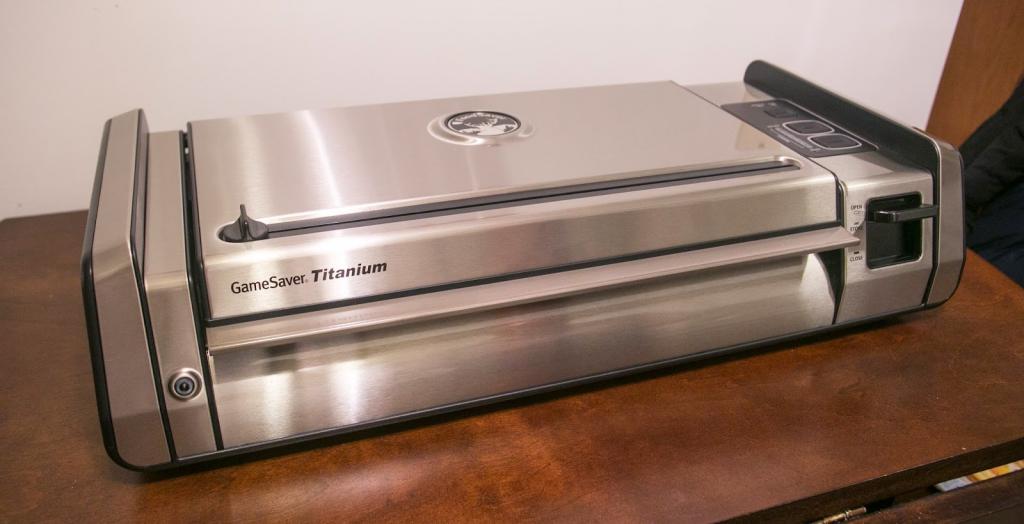Things to Look For in Purchasing a Food Vacuum Sealer
Whether it's storing this year's crop of strawberries fresh from the garden or saving last night's stroganoff to utilize for another meal, vacuum sealers could be a great tool. Vacuum sealers work by eliminating the air within the storage bag, then sealing the bag before any air will get back in. This significantly reduces the possibility of aerobic bacteria--bacteria they require oxygen to survive--surviving in the food, along with decreasing oxidation. When coupled with refrigeration or freezing, vacuum sealed foods can store safely for a significantly long time.
Selecting the right best commercial grade vacuum sealers can be challenging, however. There are lots of different brands to choose from, and often a variety of models within each brand. This information won't attempt to judge the various brands and models but provides you with a fundamental idea what features to look for and how to ascertain which group of features are right for you.

Sealer Bar Width
The sealer bar is the area of the best vacuum sealer that melts the two sides of a vacuum storage bag together to generate an airtight seal. In addition, it determines the widest bag the sealer can use. As an example, if a sealer includes a 12" sealer bar, you won't manage to use bags wider than 12" at most. For best results, you will want to use bags narrower than the sealer bar to make certain a tight seal all the way over the bag.
Before shopping for the best vacuum sealer, take time to take into account that which you should seal. For several people that are storing everyday foods, bag width is not really a critical consideration. Others, however, may be storing larger stuff like cuts of meat, whole vegetables, as well as important documents (vacuum sealing might help preserve documents as well). These individuals might want to look at a larger sealer bar to ensure the machine can seal bags wide enough to support their items. Consider, too, that while a bag may be, for example, 12" wide, a number of the internal space is taken up with bag seams and may not allow a full 12" internal storage space.
Automatic and Manual Modes
Most vacuum sealers come with an automatic mode. This mode does a lot of the work for you by testing the air pressure in order to shut down whenever a certain pressure is attained, then automatically starting the sealing (and sometimes bag cutting) process. For many casual users, this is ideal and takes a lot of the guess-work out of vacuum sealing foods.
But not totally all foods behave the same. Dry pasta, for example, is a lot more straightforward to seal than fresh spaghetti sauce. Too much suction could end up in the sauce being pulled out from the bag and building a mess. For more knowledgeable users and for more delicate uses, some machines include a guide mode. An individual can then monitor the procedure themselves for more precise control.
Variable Pressure
Many models deliver an individual vacuum pressure, some units allow the consumer to set the total amount of pressure for greater control. Again, this is more or less important depending on how you intend to utilize your vacuum sealer. More delicate items may require more gentle pressure to avoid damage (some models boast the capacity to crush aluminum cans, after all). If the problem of the item being sealed is important, finding a unit with variable pressure may be vital that you.
Multiple Sealing Wires
Most models seal the bags by utilizing heated wires to melt the bag sides together. Having more than one sealing wire provides a reduced potential for tiny gaps in the seal, which let air back into the bag. Most models may have two wires or even a much wider heating bar to make certain a tighter seal. Some models may have three or even more wires as well. For the most part, how well a bag is sealed has just as much to do with the operator as the unit, so this might or might not be as critical a feature.
Continuous Seals
Some models support the capacity to produce multiple sealed pouches in a continuous row. As an example, a person could seal pasta, meatballs, and sauce in three separate pouches, but leave all three still linked together as an individual package. Most models only allow for one seal per pouch, however many allow it to be possible to seal one pouch after another without cutting between each pouch. This could be a handy feature but may be less important for some users.
Automatic Bag Cutter If cutting bags yourself is really a hassle, then you may want to take into account a unit that cuts the bag automatically. This is more important when using rolls of sealing plastic rather than individual pouches. A bag cutter can be very convenient, especially when sealing multiple bags in a single session. On one other hand, it is an additional moving part that could break and will more than likely need maintenance or replacing after the cutter becomes dull.
How to Decide?
In the event that you aren't sure how you intend to utilize your vacuum sealer, you may wish to buy the most inexpensive model you'll find at first, just to get your feet wet. Once you know how they work and what you are able to do using them, then you're able to search at additional ways you want to put it to use, and whether the model you've will support that use. Or even, then you're able to upgrade to a better model knowing fully that which you are looking for.


